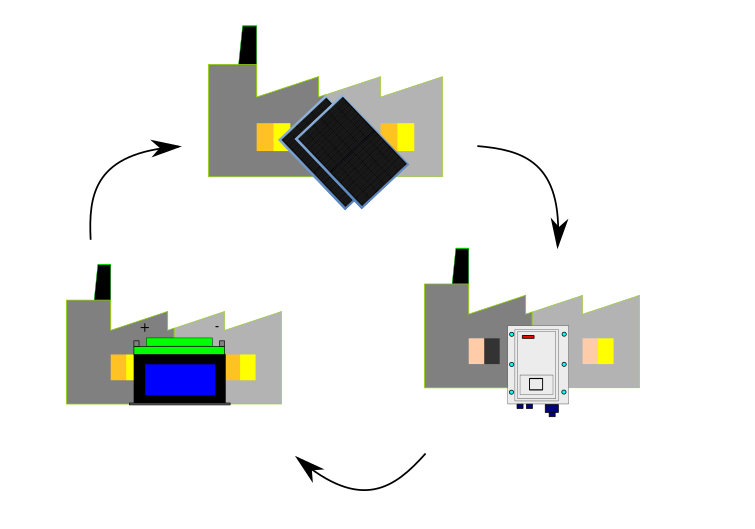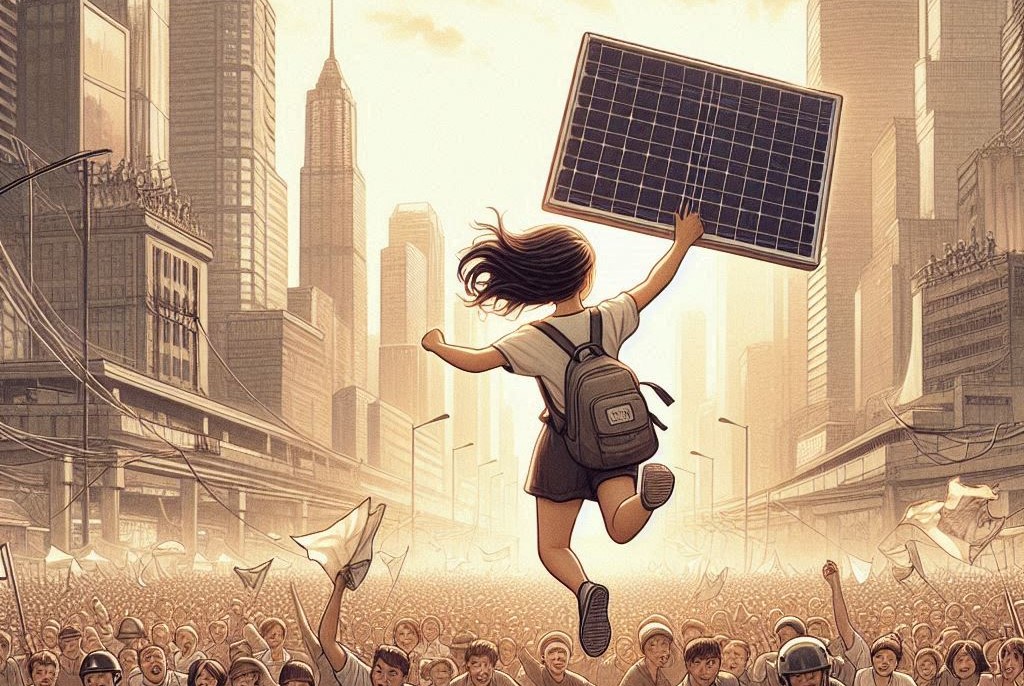Energy freedom means that a country doesn’t have to bring in energy from other countries to meet its own needs. Making sure there is enough energy to meet demand and keeping the power grid and facilities safe from both physical and digital threats is what energy security means. Energy security and energy freedom work together to make the country safer.
Energy independence in future is in tree statements
In the near future, we will all have to rely on renewable energy sources, whether we like it or not. To ensure timely transition, it is crucial to prioritize energy independence. This means that any country or community that strives for energy independence must have three main elements.
1. Factory of solar cells (panels)
2. Inverter factory
3. A battery factory for storing electrical energy (derived from solar energy during the day) or energy storage factory
And this must be a state or national project
In the upcoming section, I will present a model that illustrates how a developing country can accomplish this. This is only a model that serves as a pattern for further refinement. This is merely an idea, albeit a good one.
The analysis of renewable needs for household needs is ongoing.
But first, lets check our homes supply.
The primary sources of solar energy are places where people live: cities and countries.
Even though households use less electricity than industry and the economy, they are still important. Given that populated areas are the largest consumers (we count households, not industrial consumption), then the solution is for populated areas to be the largest producers as well.
In order to meet the electricity needs of households, it is necessary to examine every potentially favorable area in cities (and villages) where solar panels could be installed.
The following are taken into account:
• Constructing roofs that face south, or flat roofs in general.
• Parking areas on the north side that are not under threat from nearby buildings, trees, or other obstacles
We don’t consider the installation of solar panels for :
• Parks
• Streets
• Buildings with special architectural solutions
• Old buildings of cultural and historical importance
Instead of solar panels, it is possible to install solar shingles in order not to damage the aesthetics of the roof (if it is significant). However, it is a more expensive variant.
Everyone wins state and citizens
As I mention before, state must invest in: a factory that produces solar cells, solar panels, and solar inverters and solar storage.
This solution is necessary for a country that wants to develop solar energy independence.
Let s examine solar panel factory first.
If we carefully plan the product placement, the rounded process of solar panel production from the very beginning, in addition to the large initial investment, would bring benefits over the years.
The investment in a factory with a rounded production process amounts to a maximum of 200 million dollars. In order to justify itself economically, that factory would have to manufacture and sell panels to the market. However, the main goal of the state factory would be to sell panels at the factory price to all citizens and other investors. You may be wondering where the profit is coming from. My main idea involves creating a special favorable arrangement for individuals who are interested in investing in solar energy and possess suitable place for solar panels.
It is crucial to emphasize the term “suitable area” as it plays a significant role in both the investment and the solar panel factory. The factory would share the electricity profit with the consumer in the agreed-upon quota, which could be for example as high as 60% for the investor and 40% for the factory.

The economic model focuses on partnership, so let's share the sunshine together.
This variant is favorable for both parties. In this scenario, the solar panel factory provides the “investor” with a low factory price, enabling them to jointly invest in the production of reliable electrical energy (which is why a favorable position is crucial). Investing in supporting factories and other installation elements shouldn’t be a significant expense.
On the other hand, a specially formed commission of engineers would evaluate all suitable roofs and any “suitable areas” for installation and make recommendations to the residents of those buildings for direct installation.
This would generate three profits.
1. Citizens invest in renewable energy.
2. The country has an independent, living solar panel factory with a rounded process.
3. The factory has a constant source of income to pay off the loans invested in it, which increases with geometric progression and ultimately brings huge profits.
The solar panel factory has a 10-year loan repayment period.If the factory earned $20 million per year for ten years of repayment (the most expensive scenario), the annual production would be 200,000 panels..
Profitability of the investment preliminary estimate
For example, let’s take a solar panel with a power of 540 w oriented to south-southeast 45 degrees and placed at an angle of 30 degrees in Belgrade.
For reference, we use the JA 530 72J30 solar panel.
I use the solar calculator SPAC 1.29, which you can find at this link
The annual production of solar panels is installed in Belgrade : 496 kWh
the price of electricity 0.1 $/kW
Total annual profit from one panel 49.6 $
Ratio of profit sharing with the consumer: factory 6 : 4
Profits that go to the factory 19.84 $
Projected annual production/installation 200,000
Profit from one year of production 3,968,000
Profit in progress 10 year : 218,240,000 $
Profit in progress 12 year 309,504,000 $
The formula for calculating profit is:
Profit (N) = annual profit * (N+1)*N/2.
I note that this is the least favorable variant, the most expensive possible solar panel factory, and that the projected annual production and sale is 200,000 pcs.
Investment in a factory for the production of solar inverters
To complete the energy independence process, it is necessary to invest in the inverter factory. Inverters should comply with the solar panel factory’s annual production capacity, which is
200,000 panels * 0.5 kW = 100,000 kW.
It is possible to produce micro inverters (one inverter per panel) with a production price of $90 or a power of 5 and 10 kW (depending on whether 10 or 20 panels are installed on the roof) with sales prices of $440 and $960, respectively.
The total annual production should be from 10,000 to 20,000 pieces. In comparison, the renowned Austrian manufacturer Fronius produces 52,000 inverters per month, and the German SMA had an annual production of 21 GW.
An investment in an electric storage plant
High-capacity batteries (solar storage) are the last important link in building an energy-independent country. Every household should have a battery with capacity for when the solar panels are not working (night or cloudy weather). Currently, the problem with these batteries is the price, because the technology is based on lithium-ion batteries, which are not very affordable for everyone.
Conclusion
The total investment in these three vital factories should not exceed $270 million.
Consumers should receive favorable loans and subsidies in addition to their investments.
Citizens and the state jointly invest in the future of clean energy and share the profits according to the agreed-upon ratio.


